“Duster” Production Designer Jonah Markowitz Brings 1970s Arizona to 2025 New Mexico
The moment writer-director-producer J.J. Abrams saw actor Josh Holloway pull up to a pay phone in a vintage mini-muscle car, he knew what his next show would be. Duster, co-created with LaToya Morgan and streaming on HBO through July 3, casts Holloway, revered for his role in Abrams’ ABC hit Lost, as fast-driving rogue Jim Ellis, whose entanglement with drug dealers in 1972 Phoenix warrants the attention of Rachel Bilson’s Phoenix FBI Agent Dana Hayes.
To ground Jim’s misadventures in vintage seventies backdrops, production designer Jonah Markowitz teamed with set decorator James Kent and location manager Shani Orona’s 38-person team. Together, they tweaked the environment to transport viewers half a century into the past.
Markowitz is something of an expert on the seventies period, having also designed the country music biopic George & Tammy, Diary of a Teenage Girl, and Mapplethorpe. He says, “We didn’t want to reference all the other ’70s films. With Duster, we wanted to strike out and make our own fun version of this period.”
Speaking from Toronto, where he’s working on a Little House on the Prairie reboot, Markowitz sings the praises of primary colors, deconstructs the Elvis Presley bowling alley, and explains why, except for the car itself, Duster‘s version of the seventies is really more about the sixties.
Let’s start with the mini-muscle car that basically co-stars with Holloway in many scenes. How did you find this cool-looking Duster?
I wish I could take credit for the car, but the Duster was already cast when I came on the show by our genius picture car coordinator, Ted Moser. And it wasn’t just one, because we carried five of those cars for all the different kinds of shots, exteriors, and interiors. And we actually painted our cars to match the exact shade of red for Dusters at that time.
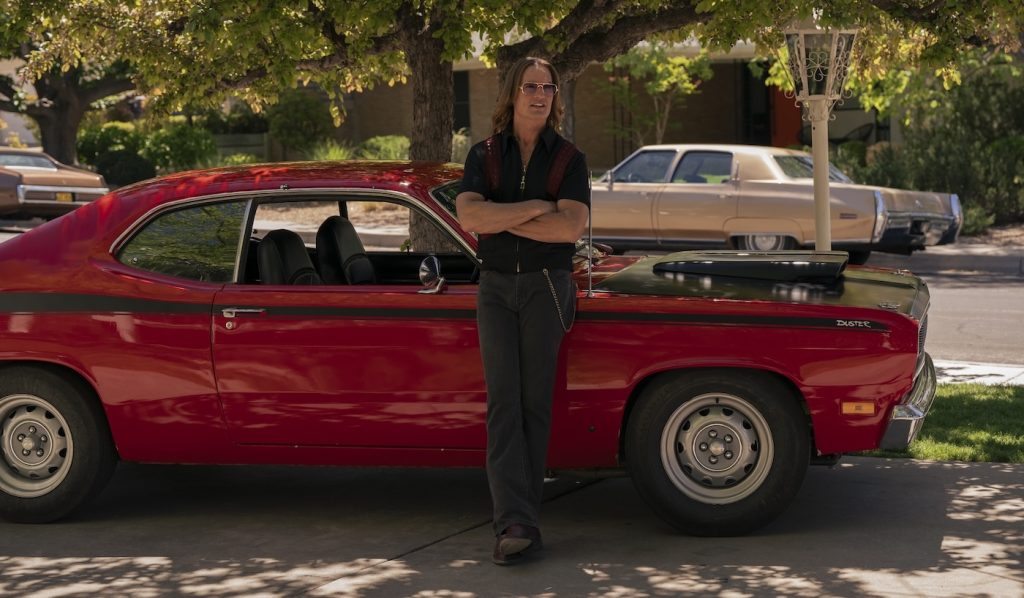
So, period correct red?
It is. And I will say that that primary red color really informed the palette I ended up going with.
People often associate the seventies with earth tones, so it’s interesting to see red front and center.
When you think of 1972, the culture is really coming from the sixties. On George & Tammy, the oranges and browns and avocadoes were certainly around, but it’s been redone so many times that people tend to think that’s all the seventies were about. For my pitch to J.J., I showed all these images I’d pulled from Roadside Americana, where the road signs, diners, and gas stations were primary colors almost across the board. I found a picture of a blue car on the road, the backlight was red, the line on the road was yellow, and that was it.
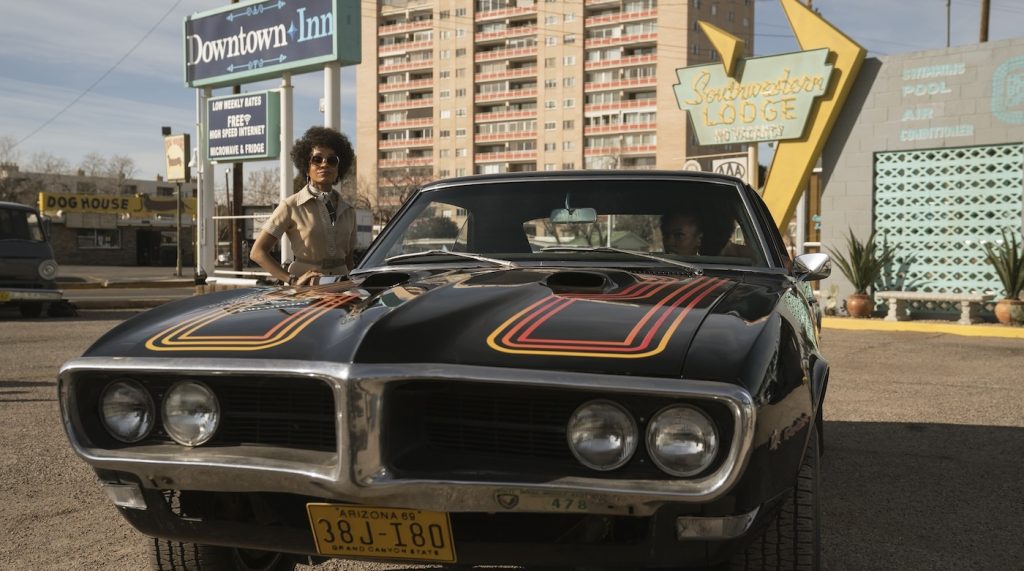
You pitched a bold concept: “Let’s not do the seventies the way everybody else does them.”
Because I knew I was going to be up against a lot of other good designers, so I had to come in with a strong idea. When I told J.J. and La Toya I wanted to design this show in three primary colors, he said he hadn’t seen anything like this, let’s go for it.
It sounds like you pictured American life in 1972 through the influence of the sixties.
In our art department, one of the walls had photos of nothing but color, palette, and pattern. At the top, it said, “This is a sixties show.” Except for the cars.
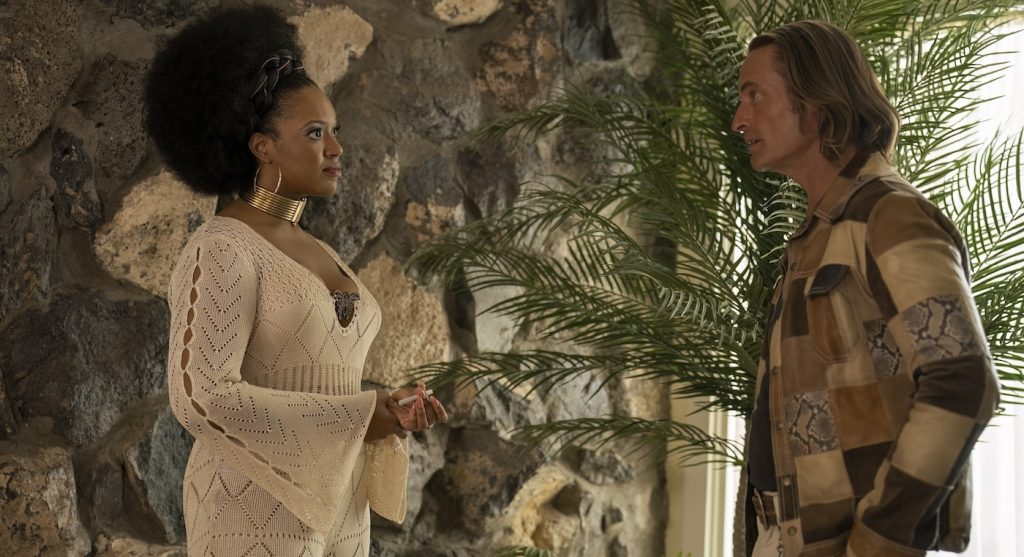
Duster is set primarily in Phoenix, but you actually shot the series in New Mexico. Did you have to alter the landscape?
There was one thing we really had to change, which was the cactus. New Mexico has big Loony-Tune cactus, and I just hated them. They were basically tall cylinders — we called them the three pickles — and I asked the visual effects supervisor, Pauline Duvall, “If we put these in front of a house, can you put arms on them?” We were able to create all those cacti that look like real Arizona, thanks to a collaboration between the art department and visual effects.
What about dressing contemporary structures so they look vintage?
Luckily, Albuquerque is full of mid-century architecture. Unfortunately, most of those homes were removed in the nineties. If you look at an old photograph of Central Boulevard, all the signs are from the fifties and sixties for blocks and blocks, and now they’re all gone.
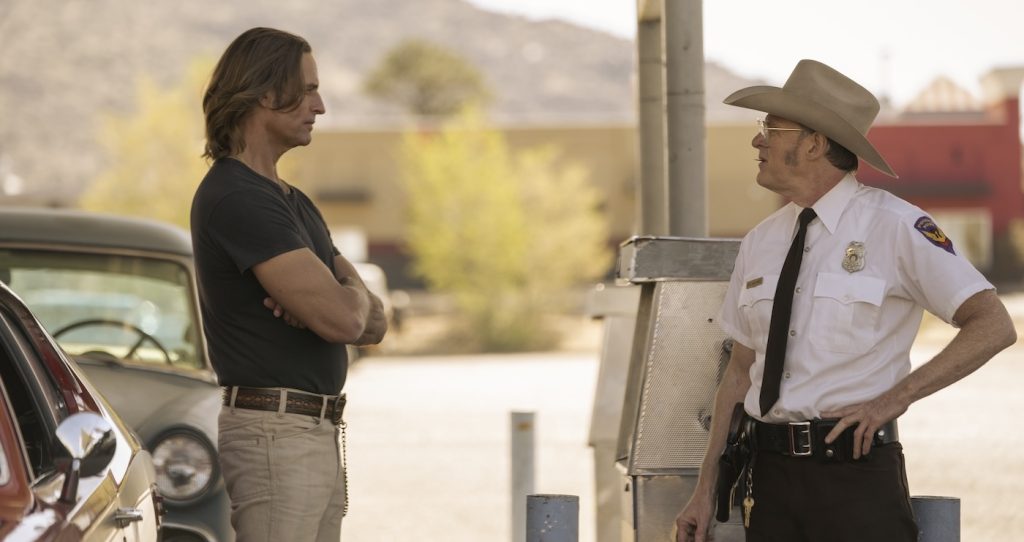
How did you deal with that?
We had to find diamonds in the rough. We’d find a gas station from that period that still exists, but nothing else around it works. It’s almost like archeology, sifting through the dirt to find architecture you can use. You’ve got the bones, but now you still have to figure out camera angles and coverage. By the end, we become really well-versed in how to hide things that are modern and fill in the details that add character.
The Elvis Presley-themed bowling alley must have required quite the makeover.
We looked at every single bowling alley in Albuquerque, but they all have [widescreen] television screens and automatic ball return. We finally chose a bowling alley with an office up above the lanes so you could see people bowling in the background when Dana’s talking to Jim. We loved the layout, but had to build covers for all the TV screens and make the ball returns a different shape because there’s a scene where the pin re-setter comes out. We did four lanes [practically] that were perfect for the seventies, and then Pauline replicated that [for the rest of the bowling alley] with visual effects.
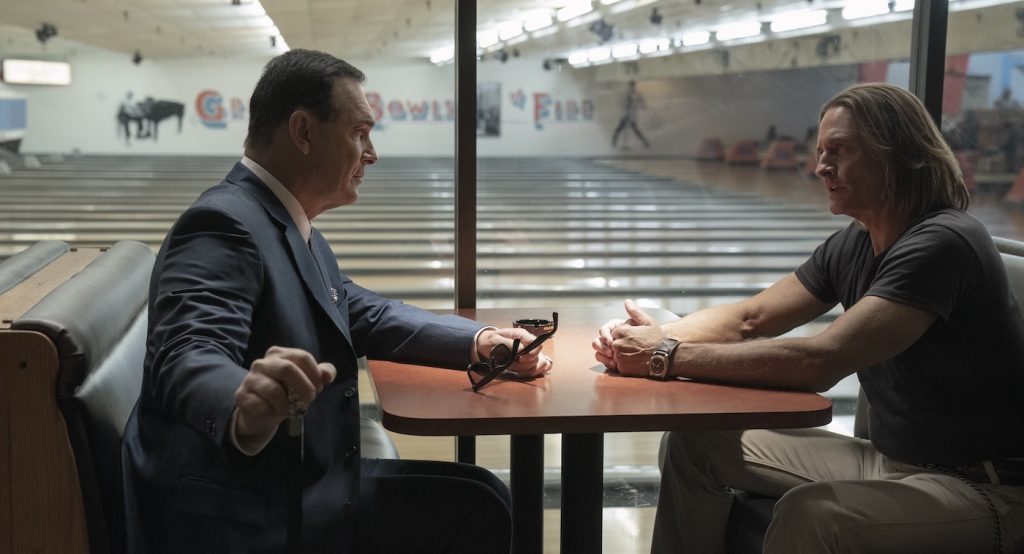
In contrast to these colorful locations, you and your team built Nina’s vast, mostly beige FBI headquarters on an Albuquerque soundstage. How did you come up with that environment?
Nina is the first black FBI agent, with all eyes on her, people scrutinizing her. What if I put her in a fishbowl where everyone can see her? So, I designed the conference room to be in the middle of this enormous rectangular set, with no closed hallways. That pushed all the windows — 225 running feet — to the outside of the set.
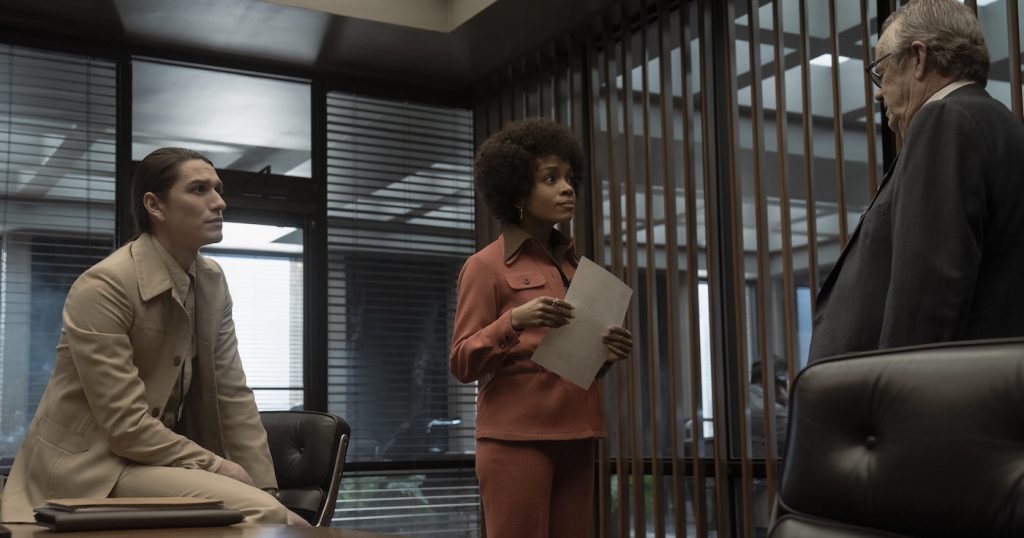
And outside those windows, it has to look like 1970s Phoenix. How did you pull that off?
We sent six photographers to Phoenix, where they positioned themselves on 19 different parking garages to shoot my favorite building there from every direction. They brought those photographs in and had graphic designers re-illustrate those buildings for the period. Then we added a 1970s-style haze to it. That translight backing took six weeks to print. When this 225-foot-wide backing finally got hung on the set, there was a big sigh of relief because, after spending almost four months making that translight, we loved it.

Filming in New Mexico, how do you see a project like Duster impacting the local community?
New Mexico has a very robust filmmaking community due to its tax credit, which generates a significant number of jobs, and all local businesses are positively impacted. What we don’t talk about as much is what filmmaking contributes to a community by attracting so many artisans and by training people locally who can now pursue visual craft as a livelihood. That changes the vibe of a city.
Factoring in delays from COVID and the actors’ strike, you spent about 18 months working on this show. What did you learn along the way?
I learned that the most successful way to find great locations is not to look for what you’re looking for.
Can you explain?
It sounds crazy, but sometimes the best place to find a great restaurant is to look at a country club. You come back to the showrunners and say, “I found this social club, the oldest building in New Mexico, it overlooks the city and has an incredible balcony. I think we could bring in the restaurant elements and make the shot work.” Or maybe you pass an abandoned drive-in theater and realize it would make a great location for a shoot-out, even if it wasn’t scripted. You’ve got to keep your eyes open.
J.J. Abrams’ formidable track record includes everything from Felicity to Mission: Impossible and Star Trek movies. What’s he like to work with?
J.J.’s like this creative laser beam of inspiration, but he’s also incredible at directing people ever so slightly to help them realize their ideas. And once he sees that you understand his vision, J.J. trusts you to bring some of your own creativity to what he’s doing.
Duster is streaming on HBO Max.
Featured image: Josh Holloway in “Duster.” Photograph by Ursula Coyote/Max

